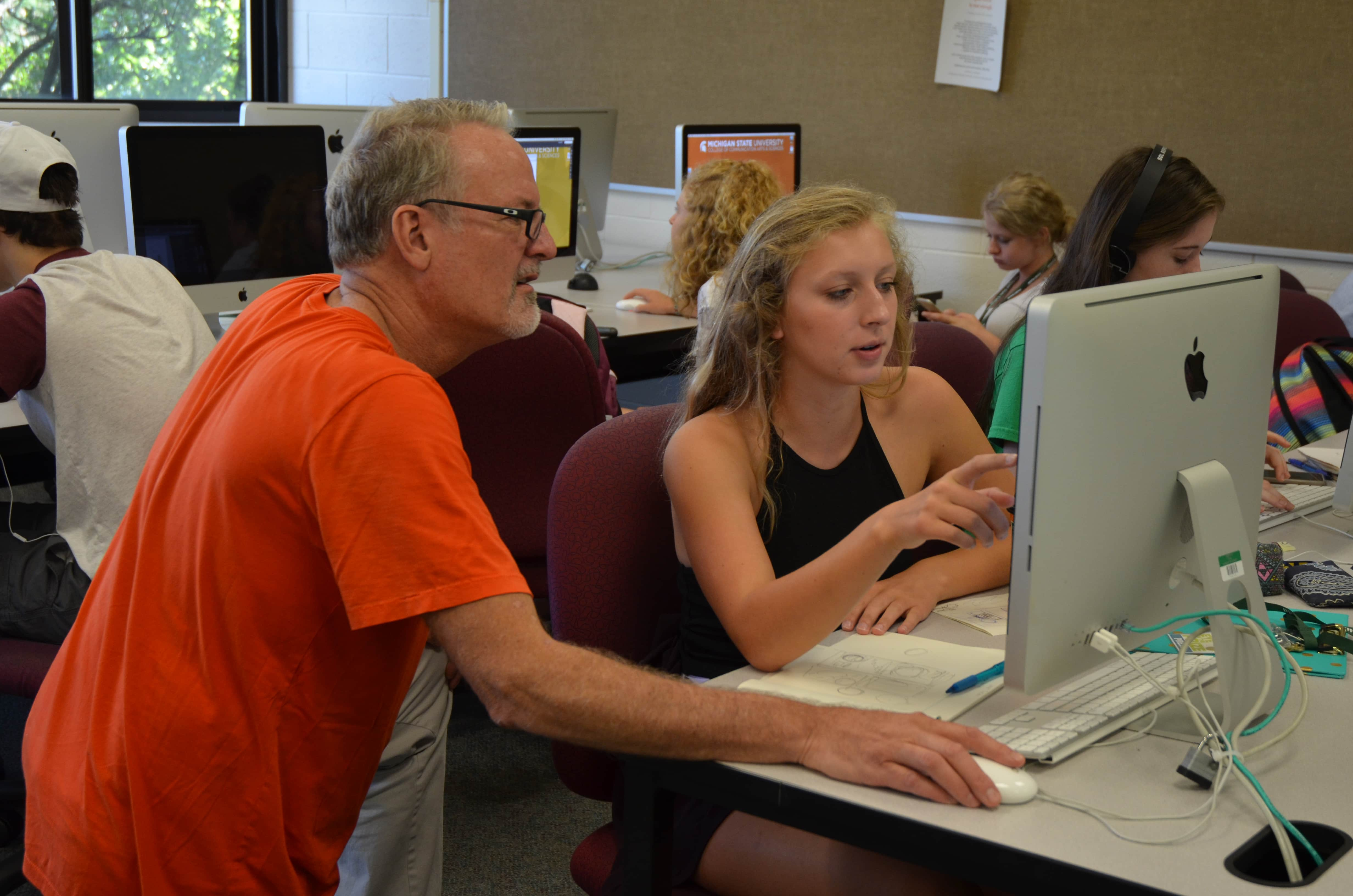Haley Kluge decided to be a journalist at age 10. Rory, her favorite TV character from Gilmore Girls, worked as a student editor and writer at Yale University. Kluge wanted to be just like her.
So when it came time to pick electives at Grand Ledge High School, Kluge enrolled in journalism 101. That first class, she says, started a four-year odyssey that spanned working as a contributor and editor of her school newspaper and yearbook, and culminated in her decision to study journalism at Michigan State University.
Kluge's passion for the press grew into a real-life understanding of what it takes to gather and present news and information. And much of what she learned, she says, was solidified by the Michigan Interscholastic Press Association (MIPA): a statewide program for high school student journalists, teachers and advisers housed and coordinated by the MSU School of Journalism.
"MIPA gave me that backbone in scholastic journalism and ethics that is so valuable as a high school student," says Kluge, now a senior in the MSU School of Journalism. "It allowed me to get so much more value from my journalism education and exposure to different things than simply a normal classroom experience."
Building a strong core
Today, Kluge is wrapping up her bachelor's—a journey characterized by internships at high-profile media companies including Good Housekeeping, Cosmopolitan and the New York Times. She stays involved with MIPA by working in the program's office and helping coordinate the association's annual summer camp.
"Because of MIPA, I was already a step ahead of my peers when I started college," she says. "I was exposed to so many things, and still use the skills I learned in MIPA summer camp to this day."
MIPA Executive Director Jeremy Steele says students like Kluge represent the ultimate goal of the nonprofit organization: to spark young people's interest in journalism, and to prepare them for college and careers in journalism or other fields. Composed of scholastic journalism teachers and advisers and their students, MIPA promotes and recognizes excellence in high school journalism through training and educational resources, conferences, contests workshops and a summer camp on the campus of MSU.
"We're seeing a new appreciation for journalism and what it teaches," says Steele. "High school journalism classes are essentially a 21st century civics class. And they embody virtually all of the standards schools implement in English classes—including how to write in different styles like commentary and non-fiction and how to interview and research."
About 170 high schools and middle schools across the state are members of MIPA. This includes 300 student media outlets and 220 teachers. Students at those member schools typically enroll for courses or electives that involve the production of yearbooks, newspapers, broadcast video, and other forms of digital and contemporary media. MIPA also is a resource for high school journalism teachers.
Similar to an athletics or music organization, MIPA provides opportunities for members to participate in events—in this case, a variety of conferences, training sessions and workshops for journalism students, advisers and teachers. About 2,000 teachers and students attend a fall conference in Lansing each year, and another 1,500 come to the MIPA Awards each April to showcase their work. Winners are selected from more than 4,000 entries. In the summer, an average of 350-400 students attend a five-day camp at MSU, enabling them to work with professional journalists and journalism educators in areas like design and graphics, photography, digital media, advertising, production and writing.
Huron High School senior Lyna Ikharbine was among nearly 80 students from five schools who participated in a one-day workshop on the MSU campus in March. Ikharbine is enrolled in yearbook production class at her school, and says she takes journalism electives to learn more about design and how to express ideas.
"I'm strengthening my communication skills and learning how to write non-fiction," says Ikharbine. "I'm also learning how to write persuasively and without bias."
Huron High School junior Gena Harris says she was drawn to study journalism after she guest wrote articles for her school newspaper on the Black Lives Matter movement and the recent Trump travel ban.
"I enjoyed the process of researching, interviewing and writing the stories," she says. "It allowed me to understand what different people and races go through. I also saw that certain parts of journalism could be applied to other classes I'm taking, like law."
Steele acknowledges that while many students get their start on journalism careers through high school programs, many others don't.
"The core of what journalism teaches—researching, writing and visual communicating—are things kids can take with them to college or on any career path they're headed down," Steele says. "And there is a lot of research that shows that kids who are involved in scholastic journalism are more civically involved and active in their communities."
MIPA was founded in 1921 and has been housed at the Michigan State University School of Journalism since 1982. Learn more about MIPA.
